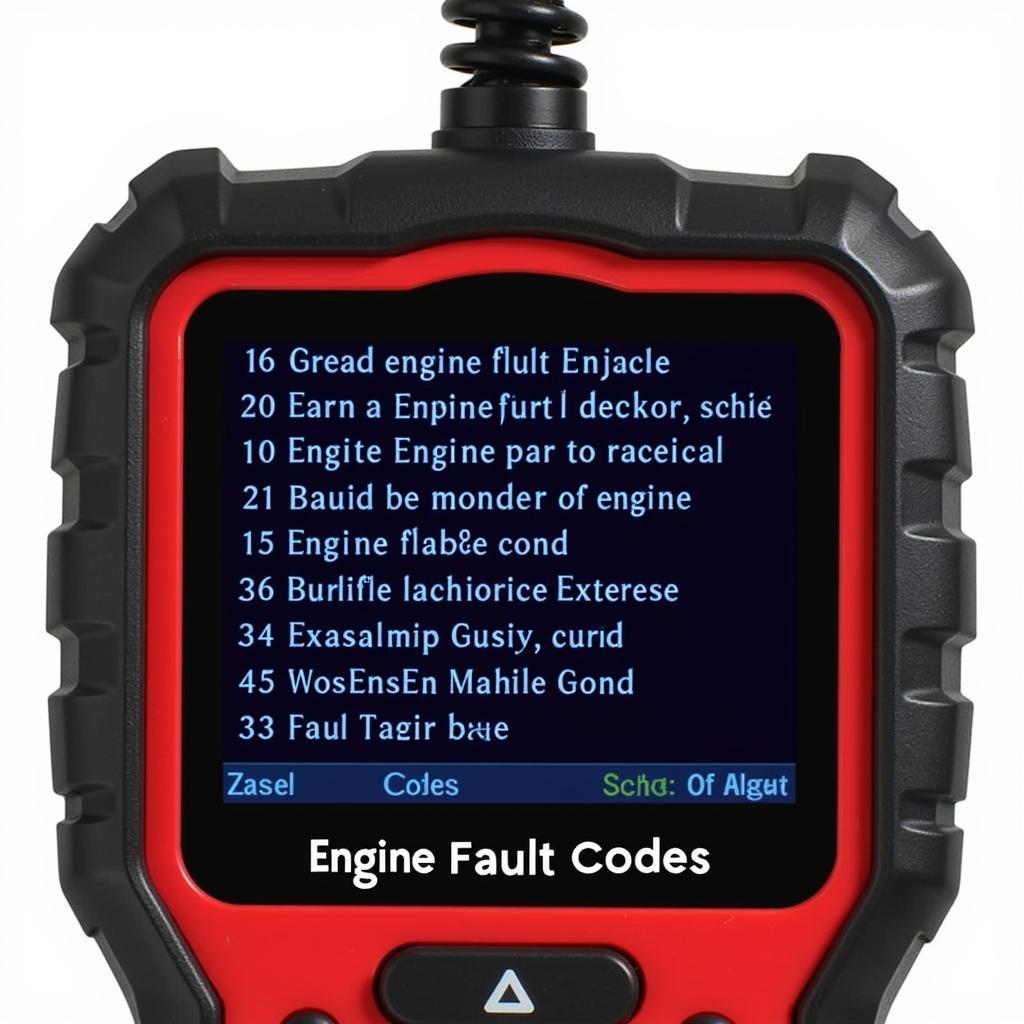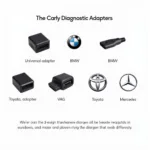Diagnostic images play a crucial role in understanding what’s wrong with your broken car. These images, generated by sophisticated diagnostic tools, offer a visual representation of the inner workings of your vehicle, pinpointing issues that might otherwise be hidden from plain sight. From faulty sensors to complex engine problems, diagnostics images on broken cars provide vital clues for effective repairs.
The Power of Diagnostics Images in Car Repair
Modern car repair relies heavily on diagnostics images on broken cars to accurately identify the root cause of malfunctions. Gone are the days of relying solely on a mechanic’s intuition. Today, specialized equipment captures detailed images of various car components, allowing mechanics to see inside engines, transmissions, and other critical systems without invasive procedures. This visual insight significantly improves the speed and accuracy of diagnosing car problems. Think of it like an X-ray for your car, revealing the hidden issues impacting its performance. Are you experiencing unusual noises, poor fuel economy, or warning lights on your dashboard? Diagnostics images can help uncover the underlying problems.
Diagnostics images are especially useful when dealing with intermittent issues, which can be difficult to replicate and diagnose using traditional methods. By capturing data and images during these episodes, mechanics can pinpoint the source of the problem, even if it’s not actively occurring during inspection. This saves you time and money, eliminating the need for guesswork and unnecessary part replacements.
Types of Diagnostics Images and Their Uses
There are various types of diagnostics images used in car repair, each serving a specific purpose. Thermographic images, for example, detect heat patterns, revealing potential problems in areas like brakes and exhaust systems. Endoscopic images provide a view inside hard-to-reach areas, such as engine cylinders and fuel lines. Ultrasound images can identify cracks and other defects in metal parts without disassembly. And of course, the familiar fault code scan, providing a detailed list of error codes linked to specific systems and components, is a cornerstone of modern diagnostics. These codes, when interpreted in conjunction with visual diagnostics images, offer a comprehensive understanding of the vehicle’s condition.
Using diagnostics images, mechanics can identify a wide range of problems, from minor sensor malfunctions to major engine damage. This not only enables targeted repairs but also helps prevent future issues by addressing the root cause of the malfunction. Think of your car’s electrical system as a complex network of interconnected components. A single faulty sensor can trigger a chain reaction, leading to multiple error codes and symptoms. Diagnostics images can help isolate the problematic sensor, preventing unnecessary repairs to other parts of the electrical system.
How to Interpret Diagnostics Images on Broken Cars
While diagnostics images are powerful tools, interpreting them requires specialized knowledge and experience. Trained mechanics understand the intricacies of various car systems and can decipher the visual clues presented in diagnostic images. They can distinguish between normal wear and tear and signs of impending failure. They can also connect the dots between different diagnostic findings, developing a comprehensive repair strategy. For example, a mechanic might notice a pattern of wear on brake components in a thermographic image and correlate it with a pulsating brake pedal, indicating the need for brake rotor replacement.
Just as a doctor analyzes medical images to diagnose a patient’s condition, a skilled mechanic uses diagnostics images to assess the health of your car. This precise diagnostic approach not only saves you money by avoiding unnecessary repairs, but also ensures the safety and reliability of your vehicle. Imagine trying to navigate a complex maze without a map. Diagnostics images are like a roadmap for your car’s internal systems, guiding mechanics to the source of the problem.
Conclusion: Leveraging Diagnostics Images for Effective Car Repair
Diagnostics images on broken cars have revolutionized the car repair industry, offering a powerful tool for accurate and efficient diagnostics. By providing a visual representation of internal components and systems, these images empower mechanics to pinpoint problems with greater precision. This leads to quicker repairs, reduced costs, and improved vehicle reliability. So, the next time your car is acting up, remember the power of diagnostics images – they might just be the key to getting you back on the road quickly and safely.
FAQ
-
What are diagnostics images?
Diagnostics images are visual representations of a car’s internal components and systems, generated by specialized diagnostic tools. -
Why are diagnostics images important?
They allow mechanics to accurately identify the root cause of malfunctions, leading to quicker repairs and reduced costs. -
What are some common types of diagnostics images?
Common types include thermographic, endoscopic, ultrasound, and fault code scan images. -
Who can interpret diagnostics images?
Trained mechanics with specialized knowledge and experience are best equipped to interpret these images. -
How do diagnostics images benefit car owners?
They help ensure accurate diagnoses, prevent unnecessary repairs, and improve vehicle safety and reliability. -
Can I interpret diagnostics images myself?
While you might be able to understand some basic information, interpreting diagnostics images effectively requires professional expertise. -
Where can I learn more about diagnostics images?
Consult with a qualified mechanic or explore online resources dedicated to automotive diagnostics.
Need help with car diagnostics? Contact us on WhatsApp: +1(641)206-8880, or Email: cardiagtechworkshop@gmail.com. Our team is available 24/7 to assist you.



